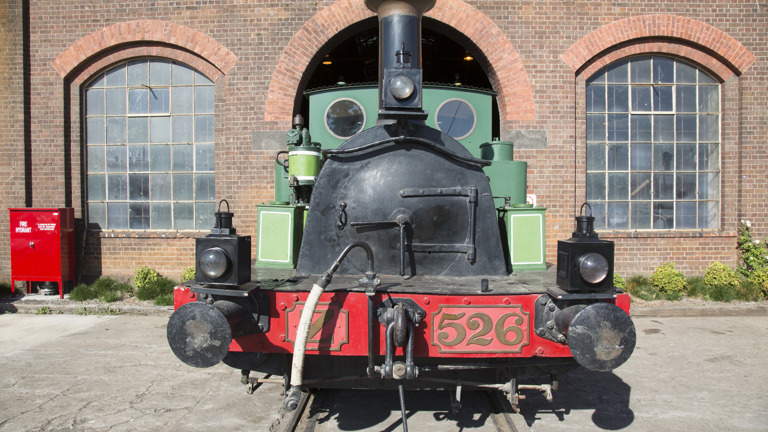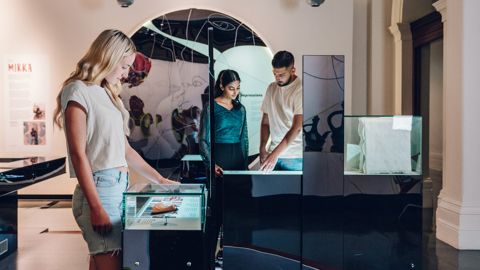
Amazing facts about Polly: the steam locomotive
‘Polly’ was the first steam locomotive built at Newport Railway Workshops, not far from Scienceworks.
Polly was in operation for over eighty years—from 1893 to 1978.
In the early 1900s, Polly was converted to a mobile steam crane to help lift and build things. She was able to lift five tonnes.
Polly was powered using coal and water. Coal is shovelled into the firebox and heat from the burning coal turns water in the boiler to steam, which rises to the top of the boiler. The steam powers the engine which pushes the mechanisms that connect to the wheels, making them turn.
The used steam and coal smoke are exhausted through the stack (or chimney) on top, creating the 'choof choof' sound when moving. Sometimes the steam whistle is sounded—choo choo!
Polly now enjoys a retirement at Scienceworks’ Heritage Machine Garage. Find out more about Polly at Collections Online.
Piece together Polly!
Help us put Polly back together with an online puzzle:
How did that get here?
Polly got us thinking about other large items in Museums Victoria's collections and how they got here.
Cobb & Co coach
Visitors to Melbourne Museum’s Melbourne Story exhibition will fondly recall the Cobb & Co coach in the back corner of the gallery.
Founded by four American immigrants, Cobb & Co provided passenger and postage transportation between Melbourne and the Goldfields. After Victoria opened its first goldfields railways in 1862, the original enterprise moved its centre of operations to Bathurst and began expanding across outback New South Wales and Queensland.
By then the Cobb & Co name had become synonymous with fast and efficient transport services, and it continued to be used by independent operators throughout Victoria until the end of the coaching era. This coach, believed to be built locally in 1880, was based on original imported U.S. designs, and spent its entire working life in western Victoria. It is believed to be the last horse-drawn coach to have operated in Victoria.
Travel bath
Given Australia’s relative isolation from the northern hemisphere, migrants to Australia could find it difficult and expensive during the nineteenth century to bring their large-sized belongings with them.
However the Davies family, who emigrated from England in 1852, brought with them a sheet-iron travel bath, complete with lockable lid, which doubled as a container to transport other personal items.
The travel bath signified a certain social standing and respectability for the middle-class Davies family, and they were popular from the late nineteenth century in English department store catalogues. It is also of import to Museums Victoria as travel baths are not commonly found in museum collections in the UK and USA.
Weaving loom
Anna Apinis was a Latvian refugee who emigrated to Australia in 1950 with her husband Ervins and son Erik. Like the Davies family, Anna brought a large object but for very different reasons. Her precious weaving loom, made from scavenged timber by fellow survivors of World War II in a German refugee camp, helped to ease her isolation and displacement by enabling her to continue her traditional Latvian weaving practices.
According to Museums Victoria Collections Online: “Anna became one of the few suppliers of fabric for Latvian national costumes in Australia in the 1950s and 1960s, and exhibited her weaving nationally, at exhibitions and Latvian cultural festivals.”
She and her daughter Anita in turn contributed many items from their personal collections to Museums Victoria.
Pier donkey engine
Believed to be the last surviving of a few dozen models of its kind, the portable steam winch, more commonly known as a pier donkey engine, was in operation on Melbourne’s waterfront between the 1850s and 1920s loading and unloading cargo from sailing ships. It was either assembled in the U.S. or, like the Cobb & Co, based on U.S. designs.
This winch was last used to provide power for cutting firewood during the 1930s Great Depression, and was rediscovered in the 1980s hidden under blackberry bushes on the Mornington Peninsula. It was then restored to its former working glory.











